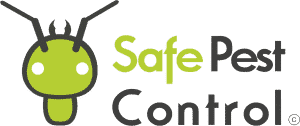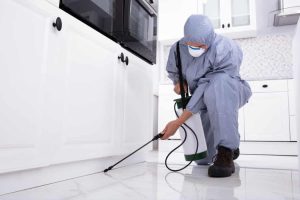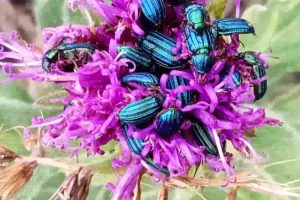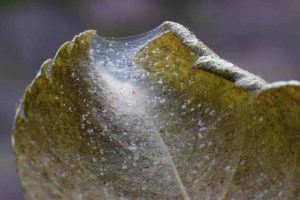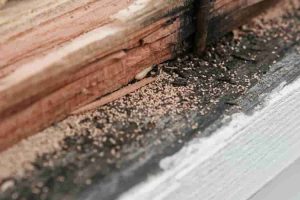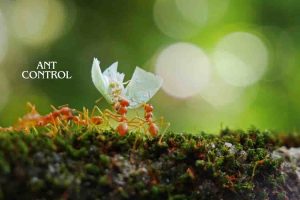Pest infestations in food processing plants can lead to significant food safety issues and operational disruptions. To prevent these problems, it’s crucial to ensure that our facilities are properly maintained and cleaned. Regularly sealing cracks and gaps in ceilings, walls, and floors, and keeping doors and windows closed can be effective in keeping pests out.
In addition to structural maintenance, we need to be vigilant about waste management. Trash cans and dumpsters must be kept clean and tightly sealed to prevent pests from being attracted to organic matter. Proper disposal of food waste and regular cleaning of grease traps and drains are essential steps in maintaining a pest-free environment in our food processing plants.
Implementing proactive measures such as using pest repellent and trap devices at entrances and exits can further bolster our defenses. Keeping our food premises and transport vehicles clean and tidy helps create a more organized, efficient, and safer workplace. For more detailed practices, refer to Controlling pests | Food Standards Australia New Zealand.
Understanding Pest Infestations in Food Processing
Controlling pests in food processing plants is crucial to maintaining food safety and quality. It involves identifying common pests, understanding contamination routes, and adhering to relevant laws and regulations.
Types of Pests Common in Food Facilities
Various pests can infiltrate food processing plants, each posing unique challenges. Insects such as flies, beetles, and cockroaches are common culprits. They can contaminate products through direct contact or leave droppings and exoskeletons.
Rodents, including mice and rats, are notorious for their destructive behaviors. They chew through packaging and wiring, leaving behind urine and droppings, which can spread diseases like Salmonella.
Birds, like pigeons and sparrows, often nest in facilities. They can introduce contaminants through feathers, droppings, and nesting materials. Our pest management program must focus on identifying and mitigating these threats.
Routes of Contamination and Health Risks
Pests introduce contaminants into food processing plants through several routes. Droppings and urine from rodents and birds carry pathogens. Insects can spread disease by coming into contact with food and surfaces.
Salmonella, a common bacteria found in animal droppings, can contaminate food products, leading to severe health risks. We must regularly inspect and clean areas prone to infestation to prevent contamination.
Contaminated equipment and materials can also transfer pests or pathogens. Implementing proper sanitation and exclusion techniques is essential to maintaining a safe processing environment.
Laws and Regulations
Adhering to food safety laws and regulations is essential for effective pest management. The Food Safety Modernization Act (FSMA) plays a significant role in setting standards for food safety. This act emphasizes proactive measures to prevent contamination rather than responding after it occurs.
The U.S. Food and Drug Administration (FDA) enforces these regulations, ensuring food processors comply with strict guidelines. Our integrated pest management (IPM) strategy must align with these requirements, incorporating regular inspections, proper sanitation, and timely pest control measures.
By understanding and implementing these regulations, we can create safer food processing environments and reduce the risk of pest-related contamination.
Implementing an Integrated Pest Management (IPM) Program
Implementing an Integrated Pest Management (IPM) program in a food processing plant requires a strategic and thorough approach. We need to focus on identifying pests early, taking preventive measures, and training our staff to be vigilant and proactive.
Key Principles of IPM
An Integrated Pest Management (IPM) program revolves around several key principles. First, we must inspect and identify pests accurately. By knowing what we’re dealing with, we can tailor our control methods effectively.
Next is prevention. Our goal is to stop pests before they become a problem. This includes proper sanitation, sealing entry points, and maintaining the facility.
Monitoring and documentation are also crucial. We should keep detailed records of pest sightings, treatment actions, and results. These records help us understand patterns and improve our strategies over time.
Treatment methods in IPM rely on a combination of techniques. This might include chemical and non-chemical methods but used judiciously to minimize environmental impact. Corrective actions are only taken when necessary, targeting specific pests to reduce collateral damage.
Creating a Custom Pest Management Plan
Developing a custom pest management plan starts with a thorough inspection of the facility. We identify potential pest entry points, breeding sites, and food sources. This helps us create a tailored plan that addresses our specific needs.
We then outline preventive measures tailored to our facility’s layout and operations. This can include improving sanitation practices, adjusting waste management processes, and altering storage procedures to reduce pest attractions.
Regular inspections and monitoring form the backbone of our plan. Scheduled assessments ensure we stay ahead of any potential pest problems. Our plan must be flexible, allowing for corrective actions when we detect any issues.
Documentation is critical. Keeping detailed records of inspections, sightings, treatments, and outcomes helps refine our approach and ensures accountability.
Training and Awareness for Staff
To successfully implement IPM, we must train our staff thoroughly. Employees need to understand their role in preventing pest infestations.
We start with awareness programs. Teaching our staff about the importance of pest management helps them recognize signs early and take prompt corrective actions.
Hands-on training sessions are essential. Employees should learn how to identify pests, understand the proper use of pest control equipment, and follow sanitation protocols. This ensures everyone is equipped to contribute effectively.
Finally, continuous education ensures our staff stays updated on the latest IPM techniques and technologies. Regular workshops and refresher courses help maintain high standards in our pest management efforts.
By focusing on training and awareness, we create a proactive culture in our facility, reducing the likelihood of pest-related issues and maintaining a safe production environment.
Prevention and Sanitation Measures
To keep pests out of food processing plants, we need to focus on maintaining the facility, following strict cleaning protocols, and ensuring proper food storage and packaging practices. These steps will reduce the risk of pest infestations and help maintain a clean and safe environment.
Facility Maintenance and Repair
To prevent pests from entering, we must regularly inspect and repair the facility. Check for cracks and crevices in walls, floors, and ceilings. Seal any gaps around doors and windows with weather strips. Install mesh screens on all windows and vent openings to block pests. Regularly maintain landscaping around the facility, using gravel instead of mulch to deter pests from nesting near the building.
Cleaning Protocols and Waste Management
Effective cleaning and waste management are crucial in preventing pests. We need to establish a daily cleaning routine that includes sweeping, mopping, and disinfecting all surfaces. Garbage should be collected in tightly sealed containers and removed from the facility regularly. Clean and properly maintain grease traps and drain covers to prevent the buildup of organic matter. Keep trash cans and dumpsters clean and ensure they stay closed at all times.
Food Storage and Packaging Practices
Proper food storage and packaging are essential to prevent contamination and attract pests. Store all food products in sealed, pest-proof containers. Regularly rotate stock to avoid expired or spoiling items which can attract pests. During the processing and packaging stages, ensure that all equipment and surfaces are sanitized. Implement self-closing doors or air curtains at entry points to minimize pest entry during deliveries or operations.
Monitoring and Continuous Improvement
Continuous monitoring and improvement are crucial for preventing pest infestations in food processing plants. By conducting regular inspections and updating our integrated pest management (IPM) strategies, we can ensure that our facilities remain pest-free and compliant with regulations.
Regular Inspections and Identification
Regular inspections are critical in keeping our food processing plants pest-free. Using detailed checklists, these inspections help us identify potential problem areas early.
We perform inspections weekly, focusing on high-risk zones such as storage areas, entry points, and waste disposal sites. Traps like sticky boards and LED light traps are equipped in these areas to capture pests for easier identification. These tools assist in detecting common pests such as rodents, insects, and birds promptly.
Documentation is another key element. We log each inspection thoroughly, noting any signs of pest activity and the corrective actions taken. Partnering with experts like Rentokil and Copesan ensures we follow best practices for inspections and identification. This proactive approach allows for quicker responses to potential issues and helps maintain high standards in our facility.
Evaluating and Updating IPM Strategies
Evaluating and updating our IPM strategies is essential for maintaining effective pest control over time. This involves reviewing the data collected during inspections and adjusting our methods based on what we learn.
We evaluate the effectiveness of traps and other pest management measures regularly. This helps us determine if they are capturing the targeted pests efficiently. If we identify any trends or recurring issues, we adjust our strategies accordingly. It may include changing the types of traps, modifying their locations, or introducing new pest control technologies.
Quality assurance and corrective actions play a significant role in this process. Any identified deficiencies in our pest management program are addressed promptly, ensuring continuous improvement. Collaborating with organizations like the National Pest Management Association keeps us informed about the latest advancements and best practices in pest control. This ongoing assessment and adaptation help us stay ahead of potential infestations, ensuring a safe and compliant food processing environment.
On-Time Service

5 STAR SERVICE BASED ON 100+ GOOGLE REVIEWS
PET & FAMILY FRIENDLY TREATMENT
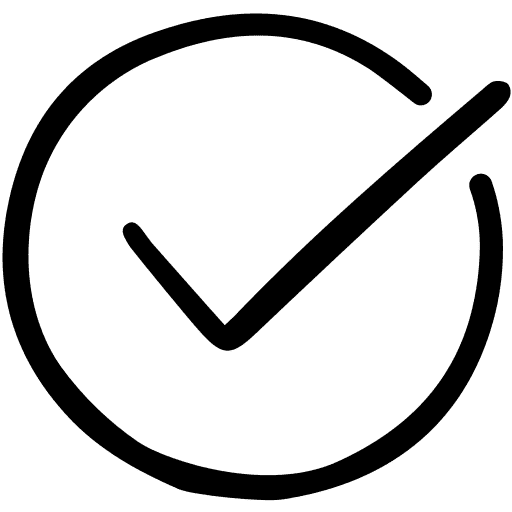
ALL YEAR-ROUND PROTECTION
Take Back Control Now
8
REASON TO CHOOSE SAFE PEST CONTROL
- Guarantee protection all year-round
- 30 Years Collective Experience
- An impeccable reputation across Sydney's Suburbs
- Certified treatments & written Warranty On all work carried out
- Family Owned & Operated
- Rated #1 Pest Control In Sydney NSW
- No Mess, No Smell
- Family & Pet Friendly Treatments
REQUEST A QUOTE
